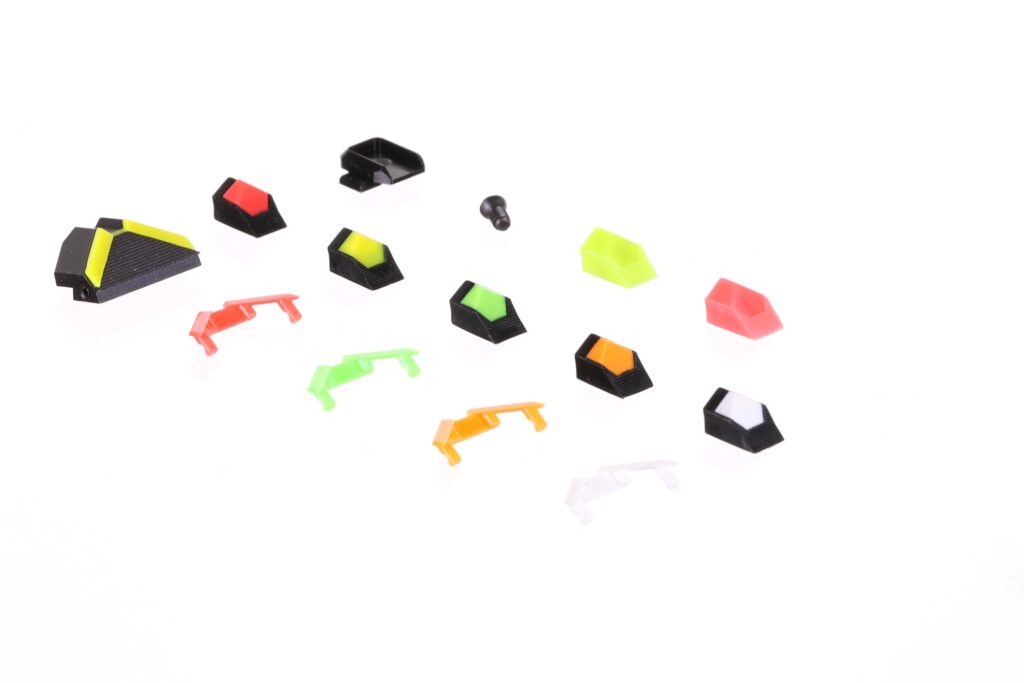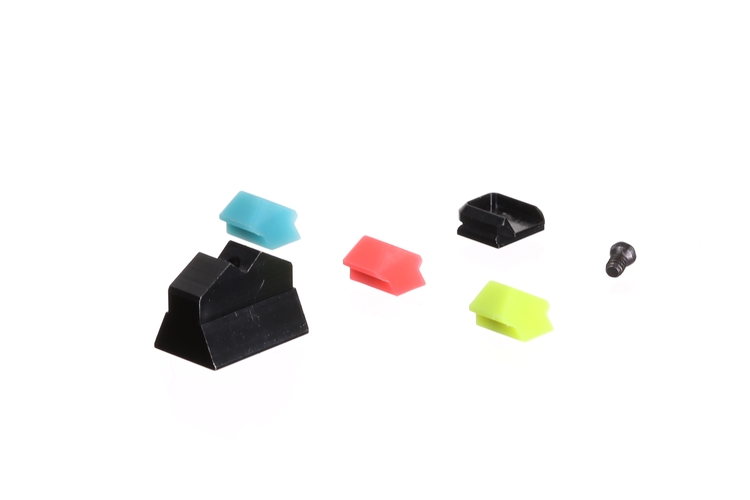What To Know About Tritium And Fiber Optic Iron Sights
Introduction: Choosing the Right Iron Sights
Selecting between Tritium and Fiber Optic iron sights involves understanding their distinct features and functionalities, catering to varying shooting preferences and conditions. The OuterImpact Pyramid and Dark Diamond Sights are the pinnacle of speed, acquisition and preference. Our sights are made from steel with polymer inserts for coloration and glow. But we want our customers to have a complete understanding of all available options.

1. Pros of Tritium Iron Sights
Low-Light Visibility
Tritium sights excel in low-light conditions, providing a constant glow without the need for external light sources, ensuring visibility in darkness.
Longevity
With a half-life of around 12 years, Tritium sights offer long-term illumination without requiring frequent replacement.
No Dependency on External Light
Unlike Fiber Optic sights, Tritium sights do not rely on external light sources, ensuring consistent visibility regardless of lighting conditions.
2. Cons of Tritium Iron Sights
Initial Brightness Diminishes
While Tritium sights have a long lifespan, their initial brightness diminishes over time, requiring replacement after several years for optimal brightness.
No Daylight Enhancement
Tritium sights are less effective in daylight, lacking the brightness boost seen in Fiber Optic sights under well-lit conditions.
Regulatory Constraints
Regulations regarding the use and handling of Tritium might vary across regions due to radioactive content.
3. Pros of Fiber Optic Iron Sights
Enhanced Daylight Visibility
Fiber Optic sights offer exceptional brightness in well-lit environments, maximizing visibility during daylight shooting scenarios.
No Battery or Radioactive Components
Fiber Optic sights do not rely on batteries or radioactive materials, making them easier to handle and less regulated than Tritium.
Adaptability to Changing Light Conditions
These sights adjust well to changing light, providing varying degrees of brightness depending on available light sources.
4. Cons of Fiber Optic Iron Sights
Dependence on External Light Sources
Fiber Optic sights require external light sources to illuminate, making them less effective in low-light or nighttime conditions.
Fragility Concerns
The fiber rod in these sights can be fragile and prone to damage under rough handling or heavy use.

5. Conclusion: Making an Informed Choice
Selecting between Tritium and Fiber Optic iron sights involves weighing the advantages and limitations of each. While Tritium excels in low-light scenarios, Fiber Optic sights perform exceptionally well in daylight conditions. Assessing individual shooting needs and environmental conditions aids in choosing the ideal iron sight for enhanced shooting accuracy and visibility.
This comprehensive guide explores the strengths and limitations of Tritium and Fiber Optic iron sights, assisting firearm enthusiasts in selecting the most suitable iron sight materials. Understanding the characteristics of both options ensures optimal performance and aids in choosing the right equipment for varied shooting conditions.
